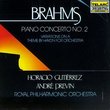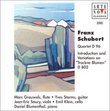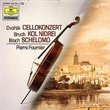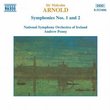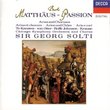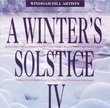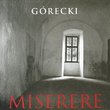| All Artists: Jeffrey Wells, Felix [1] Mendelssohn, Christoph von Dohnányi, Christine Cairns, Cleveland Orchestra Chorus, Jon Garrison, Tom Krause Title: Mendelssohn: Symphony No. 3; Die erste Walpurgisnacht Members Wishing: 0 Total Copies: 1 Label: Telarc Release Date: 5/28/2002 Genre: Classical Styles: Opera & Classical Vocal, Symphonies Number of Discs: 1 SwapaCD Credits: 1 UPC: 089408018428 |
Search - Jeffrey Wells, Felix [1] Mendelssohn, Christoph von Dohnányi :: Mendelssohn: Symphony No. 3; Die erste Walpurgisnacht
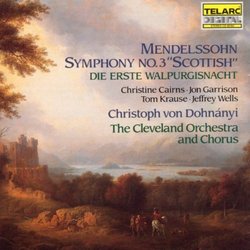 | Jeffrey Wells, Felix [1] Mendelssohn, Christoph von Dohnányi Mendelssohn: Symphony No. 3; Die erste Walpurgisnacht Genre: Classical
![header=[] body=[This CD is available to be requested as disc only.]](/images/attributes/disc.png?v=a4e11020) ![header=[] body=[This CD is available to be requested with the disc and back insert.]](/images/attributes/disc_back.png?v=a4e11020) ![header=[] body=[This CD is available to be requested with the disc and front insert.]](/images/attributes/disc_front.png?v=a4e11020) ![header=[] body=[This CD is available to be requested with the disc, front and back inserts.]](/images/attributes/disc_front_back.png?v=a4e11020) |
Larger Image |
CD DetailsSimilar CDsSimilarly Requested CDs
|
CD ReviewsThe Romantic Mendelssohn Brett A. Kniess | Madison, WI | 04/07/2000 (5 out of 5 stars) "Mendelssohn's last composed symphony, his Symphony No. 3 "Scottish", was composed after a trip to England and Scotland. In addition, at the same time, he composed a cantata on a text by Goethe called The First Walpurgis Night, both works featured on this CD.
The Scottish Symphony, while inspired by his travels to the British Isles, does not contain any real folk-based melodies. Instead, Mendelssohn creates his own from modal treatments he heard, instrument choices, and dance rhythms of the culture, all which evoke a Scottish feel. The symphony opens with a chorale in the winds, a short rising melody (which will appear in the cantata). The chorale feels Baroque, with odd clashes of dissonance at cadence points. After the brief introduction, the pace quickens into a 6/8 dance feel, one which uses the opening melody in a new form. After a brief repose at the end of the first movement, the second movement begins with a snappy clarinet melody to cheer anyone's mood, one which instantly brings to mind the highlands. The third movement opens with a broad violin melody, one that at first is courtly, but evolves into love. The movement oscillates between that motive and a slow march-like dotted theme in the winds, brass, and timpani. The final movement features an athletic and brisk violin melody over quickly paced woodwinds, a feeling which lasts until the last few pages, when the entire ensemble comes together for a stately march, bringing the work to a full conclusion. Mendelssohn's last symphony is not necessarily brooding, but lively with a dark undertone. His melodies seem as if they were taken from the mists of Scotland, but Mendelssohn's classic inventiveness is all his own. Mendelssohn is a master of creative woodwind writing, and you feel they share the spotlight with the strings, while timpani and brass accent the drama. A great cap to his symphonies. Mendelssohn's cantata Die erste Walpurgisnacht is his most extroverted showing of outright Romanticism. Goethe's poem is about Druid heathens who lived in a village of melded Christianity. They decide to hold an ancient ritual on a mountain, regardless of the Christian guards watching. The opening overture uses a melody almost exactly taken from the opening of the Scottish symphony; this one, however, is more forceful, and for that matter, resolves in a more tuneful manner. After the stirring overture, the story begins. A druid and a chorus of heathens sing of their intent to perform the ritual. An old woman warns the group, but the men and a priest decide to go. A very exciting sequence, with the Chorus of Druid Guards and heathens is nearly bombastic in ecstasy and excitement. A trembling appearance of the Christian Guards view the scene, but the Druids end the work with a chorus of light. This early conceived work may be Mendelssohn's most overtly Romanticized, outgoing work in the catalog. An interesting and underplayed work. The Cleveland Orchestra under Christoph von Dohnanyi give fresh and riveting performances. Of particular note is the amazing string section, with incredible warmth and ensemble. The woodwinds and brass are balanced in proportion for the most part, and play excellently. The interpretation is forceful and swift, with the opulent Telarc sound providing the exciting atmosphere. The Cleveland Chorus is usually hit and miss, but they sing with great virility, as it calls for. The chorus is present, full, and well-balanced against the orchestra. The soloists, while they do not play a large role, also sing very well. Compare on your own, you may want Dohnanyi's earlier recordings of the same works (for less money) plus some other symphonies on the Decca/London label; but for just these works, a great choice." |

 Track Listings (14) - Disc #1
Track Listings (14) - Disc #1
